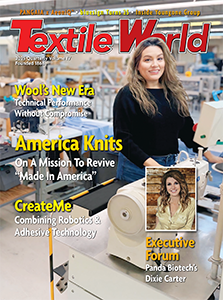ZURICH, Switzerland — January 26, 2018 — At the end of March, Switzerland-based HeiQ is going to go live with “heiq it!”, its one-of-a-kind Fast Fabric Sampling Tool. It is an online fabric configuration platform that enables fabric managers at textile brands to assemble premium customized fabrics with innovative HeiQ technologies. Brands can order dozens of meters of functional fabric samples or directly field trial testing tech-shirts. Within only two weeks, the configured fabric samples can be provided and thereby significantly speed up the innovation development and verification process. At ISPO Munich, interested fabric and innovation managers can get an exclusive preview into “heiq it!” and test the online sample configuration prototype at the HeiQ booth C3-402.
The textile brands’ product and fabric innovation development and verification process is usually cumbersome and lengthy, especially the sourcing of functional fabric samples used for real-life wearer trials. The Swiss textile innovator HeiQ surveyed dozens of fabric and innovation managers at textile brands to get an in-depth insight into the daily life processes of innovation and was confronted with a major unmet need: rapid verification of innovation ideas. Repeatedly respondents experienced a lead time of up to three months, from the first contact until receiving viable samples for prototyping and verification. Long sample verification times carry the risk of failure and missing the annual timeline for new innovations to launch.
In order to provide verified functional fabric samples quicker, HeiQ has developed “heiq it!,” a one-of-its-kind Fast Fabric Sampling Tool. “heiq it!” is an online fabric configuration platform enabling fabric managers at textile brands to get functional fabrics within two weeks. Once registered online, brands will have the possibility to choose a suitable fabric type and structure from HeiQ’s premium fabric library for their target garment. In a next step, the desired functionality combination is added from HeiQ’s wide range of textile technologies, like dynamic cooling, advanced UV protection and durable odor control. In a further step the testing and specifications are selected. And finally, “heiq it!” provides the option to either order dozens of meters of treated functional fabric or ready-to-test assembled half-side or fully treated tech-shirts to perform real-life wearer trials. Once the desired functional fabric sample has been configured and ordered, HeiQ’s application specialist in Switzerland starts to produce the sample and coordinates its performance verification testing.
Altogether, “heiq it!” is going to accelerate, simplify and standardize the functional fabric sample ordering process, leaving more time for the essential wearer trial testing and performance evaluation of brands’ next textile product innovation. Fabric managers at brands are empowered to fast-track the creation of novel and enhanced garments while reducing the risk of failures. HeiQ constantly strives for providing its brand partners with a first-in-class innovation and differentiation service support.
The backbone of the “heiq it!” Fast Fabric Sampling Tool is on the one hand a strong partnership and collaboration with some of the world’s leading premium fabric manufacturing mills like Sitip, Italy; Pontetorto, Italy; Tessitura Taiana Virgilio, Italy; Borgini Jersey, Italy; and E. Schellenberg Textildruck/Greuter Jersey, Switzerland, equipping the “heiq it!” fabric library, and on the other hand an advanced online product configuration system and a continuous Swiss pilot finishing line.
End of March, “heiq it!” is going to go live and will be available to innovation managers and fabric managers from textile brands globally. At ISPO Munich, interested fabric managers can already get an exclusive preview into the unique Swiss Fast Fabric Sampling Tool and test the prototype at the HeiQ booth C3-402.
Posted January 26, 2018
Source: HeiQ Materials AG




